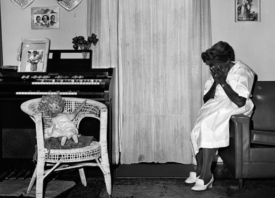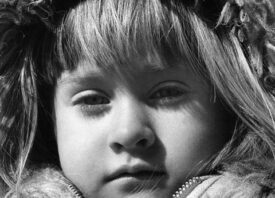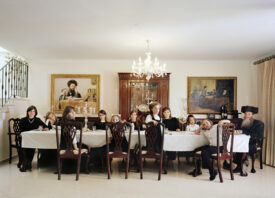Search this site
Rosalind Fox Solomon Traces the Scars of War


Rosalind Fox Solomon went to Cambodia in the early 1990s. Journalists and travelers weren’t allowed into the country at that time, so she used false papers, identifying her as a UN peace observer. According to estimates, eight to ten million mines dotted the Cambodian landscape at the start of the 1990s, the remnants of decades of war and conflict.
In 1992 alone, there were 1,573 recorded accidents. That same year, Fox Solomon met and photographed landmine victims; two of them, both teenagers, appear in the haunting new book The Forgotten (Mack Books). Turn the page, and you’ll find a portrait of two children in Belfast, created two years earlier during the conflict between Catholics and Protestants. The landmine survivors are smiling at the camera. The children are not.

As you move through the book, war (and the scars it leaves behind) emerges as a recurring theme. In past interviews, Fox Solomon has said that she does not speak much while photographing (the exception to the rule was when she documented the AIDS crisis, during which she spent a lot of time talking with the people she met). In The Forgotten, she doesn’t speak much either. She lets the photos speak for themselves.
The only text within its pages are the captions (place and date), the occasional title, a passage from Bertolt Brecht’s The Threepenny Opera, a passage from Black Rain by Masuji Ibuse, a poem by Ilya Kaminsky, and an acknowledgment page ending in the words, “With great thanks to the individuals whose pictures appear in these pages.”
In many ways, the minimal text from Fox Solomon forces us to spend more time with her pictures, drawing our own conclusions and leaving us to wonder at the rest. As a result, it’s a book rich in metaphor and allusion.
Why, for example, is a picture of Mardi Gras in New Orleans part of a book that also touches on the acute wounds of conflict? It might help to know that Fox Solomon traveled to New Orleans in the early 1990s because she needed a break from witnessing the traumas of war and violence. She slept on a sofa in an unfurnished apartment in the French Quarter.

But still, even in these moments of relief and repose, the specter of war lingers. The Forgotten ends with a portrait of a woman, a survivor of Hiroshima photographed in Los Angeles in 1986, twenty years after the bombing. In the twenty or so years since Fox Solomon photographed landmine victims in Cambodia, only half of the mines have been cleared. In Northern Ireland, more than a hundred of the “peace walls” that separated Catholic and Protestant areas still stand. The scars remain.

The Forgotten is published by Mack Books. Photographs from the book will be on view at Foley Gallery in New York from October 28th through December 5th, 2021. Signed copies of the book will be available during the opening reception.
Feature Shoot and Mack Books will be giving away three copies of The Forgotten to three of our premium newsletter subscribers. If you’d like to be eligible for this and upcoming book giveaways by Feature Shoot, subscribe here.







